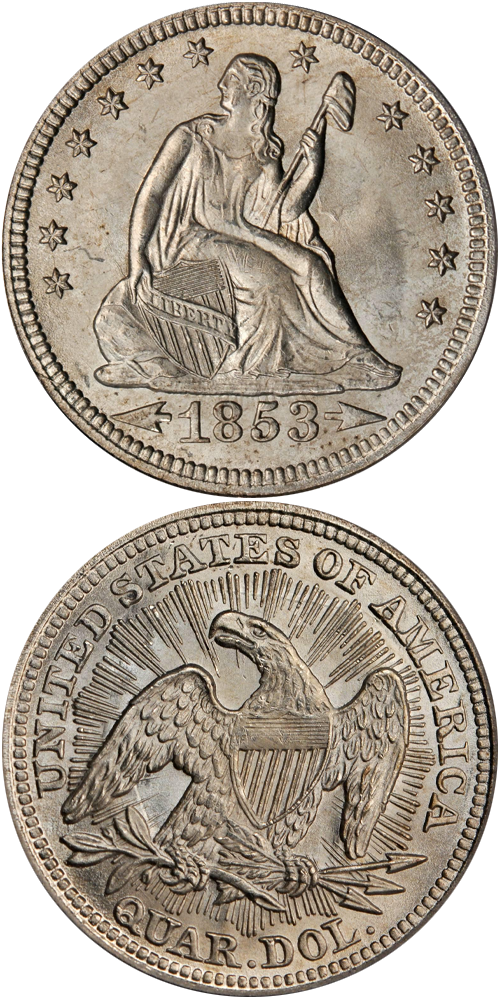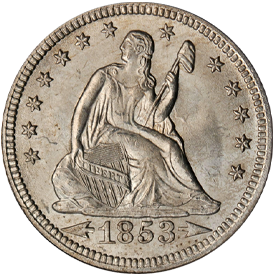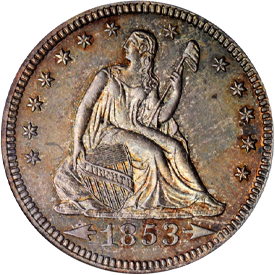Designed by: Christian Gobrecht
Issue Date: 1853
Composition: 90% silver, 10% copper
Diameter: 24.3 mm
Weight: 6.22 grams (95.98 grains)
Edge: Reeded
Business Strike Mintage: 16,542,000
Proof Mintage: Fewer than 10
As also happened with the half dime and dime, quarter dollars were reduced in weight in 1853 as a measure against the hoarding and melting of newly-released pieces. The authorized weight, previously 103.125 grains, was lowered to 96 grains. To signify this, arrows were placed to the left and the right of the date on the obverse, and rays were added above the eagle on the reverse. The rays were used only in 1853 and thus constitute a separate type. In 1854 the rays were removed, thus creating the type with arrows at date and without rays on the reverse. Coins were struck at the Philadelphia and New Orleans facilities, with 15,210,000 at the former location and 1,332,000 at the latter.
Numismatists will have no difficulty acquiring an example of the 1853 Philadelphia Mint issue in any desired grade from Good through Extremely Fine. AU pieces are scarcer, and Uncirculated coins are fairly elusive. Superb Uncirculated pieces are seldom met with.
Further Reading
In 1853 arrows were added to the date to signify a reduction in weight from 6.68 to 6.22 grams. Around that time the large production of gold in California made gold "common'' in relation to silver, with the result that silver prices rose. It became profitable to take current American coins and melt them down for bullion value. Faced with the prospect of nearly complete withdrawal of coins from circulation, the Treasury Department mandated a weight reduction. The arrows were continued through 1855.
On the reverse of 1853 issues a sunburst or rays design appeared. The type set collector then thus isolates the 1853 with arrows and rays issues as a design distinct from the 1854 and 1855 with arrows but without rays. Although 1855-O and 1855-S (the latter being the first year of quarter dollar coinage at the San Francisco Mint) are elusive, enough 1853 and 1854 Philadelphia pieces were made that the type is plentiful in all grades, although collector and investor demand has escalated the valuation of Uncirculated examples in the past decade or two.








